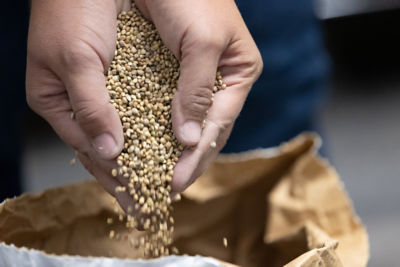Causal Agent
Cladosporium allii-cepa
Distribution
British Isles and Canada
Symptoms
Leaf infection results in elongated lesions that develop parallel to leaf veins. At first, lesions appear as chlorotic areas but later turn brown. Weak, senescent tissue is more likely to be colonized by this fungus than healthy foliage and stalks. Cladosporium allii-cepa produces an abundance of brown to olive-brown spores giving affected tissues a dark, velvety appearance. As the disease progresses onion plants begin to die.
 Olive-brown fungal sporulation on a leaf.
Olive-brown fungal sporulation on a leaf.
Conditions for Development
Usually, this fungus is considered a weak pathogen infecting plants already weakened by wounds, adverse growing conditions or disease. The disease is spread by air-borne spores that land on the foliage and scales. Infection occurs over a wide range of temperatures and when humidity is high. However, free water can reduce conidial germination.
Control
A healthy, vigorously growing plant rarely is infected by this fungus so proper fertilization, plant spacing and irrigation can prevent high disease incidence. In addition, disposing of onion debris by removal or plowing reduces fungal inoculum and disease incidence. Chemical sprays applied at regular intervals can effectively control leaf blotch.



